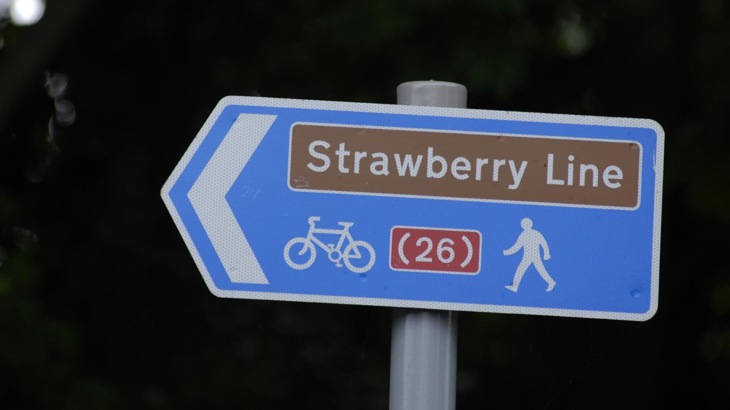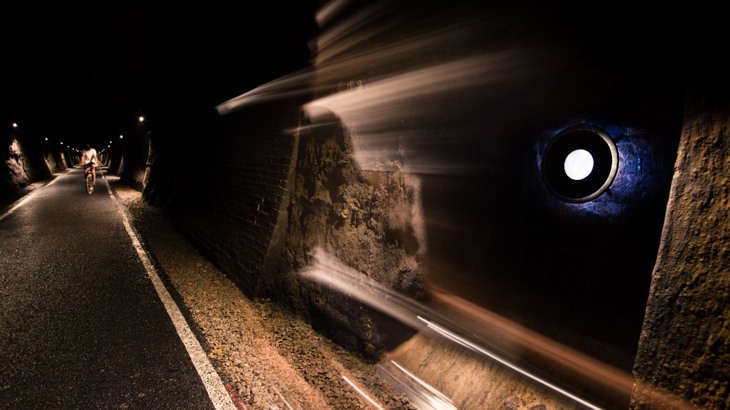How to use the National Cycle Network
New to the National Cycle Network? We’ve got some great tips and pointers to help you get the most out of your walking or cycling trip.
Our video guides and handy hints will give you everything you need for the perfect day out on your local route.
Planning your trip
Browse our website to find a route near you
You'll see useful information such as distance and surface type on our route pages.
Use your judgement on what route to take
Think about the weather, traffic conditions, your ability, experience and confidence levels.
Check out the National Cycle Network on OS Maps
You can explore local attractions using the “Places” layer and also see the gradients for many routes.
If you prefer a hard copy of your route, consider buying a paper map or guidebook in the Sustrans shop.
Walk the walk
The traffic-free sections of the Network can be a great place to explore on two feet, so why not walk?
Jog on the Network
Often running along old railway paths or alongside canals or rivers, the Network can also be fairly flat – ideal running conditions, if you prefer to jog.
What to take
Pack for the weather
Bearing in mind how changeable it can be in the UK.
Take a backup map
A paper map can be a good backup if your smartphone signal goes or the battery dies.
Don't forget your cycling kit
If you’re cycling, bring things for your bike such as a puncture repair kit, spare inner tubes, a hand pump, basic tools such as Allen keys and an adjustable spanner.
Bike lights can help you be seen in tunnels or low light (front and rear lights are a legal requirement if riding after dark).
A bike bell is useful for letting others on a shared-use path know that you’re approaching.
If you’re planning on dismounting and exploring one of the many places the Network takes you by foot, you might also want to take a bike lock.
Spend locally
The Network can take you to all kinds of places and lead to all kinds of activities, especially local and home-run businesses.
Consider taking a wallet and some money, along with snacks and a drink (to keep energy levels up – or for a picnic).
Take photos
There’ll be all kinds of sights to see so you may also wish to take a camera or use your smartphone to capture those memories.
Don't forget to tag @Sustrans if you share them on social media.
Getting there
Look out for signage on the way to your route
Red route signs with bracketed numbers lead you towards a route. For example, if you see a sign with (4), it means you’re on the way to Route 4.
Follow the little red signs
When you see the red numbered route signs without brackets, this tells you that you’re now on the route.
In addition to a number, some routes may also have a name – for example, the Nidderdale Greenway – so these may appear on signs too.
There may be more than one number on your route
Some named routes have more than one number as they follow more than one route on the Network.
For example, the Bath Two Tunnels Circuit follows Route 4, Route 24 and Route 244.

The bracketed number on this sign indicates that it is leading to National Route 26.
Enjoying the path
Slow down and look around
Take your time and enjoy the sights to be seen on the Network.
Some routes may take you to a road
You may have to cross a road, or travel along one for a period of time.
You can use Sustrans’ website and the OS online mapping to see in advance how many on-road sections to expect.
Take extra care at level crossings
Some routes on the Network intersect with railway lines and make use of level crossings.
It’s very important to take extra care at these, looking out for signs, barriers and lights. If you’re cycling, consider dismounting.
Cycling UK has some great tips for staying safe at level crossings.

Remember to use your bike lights when cycling through tunnels
Explore tunnels
Many Network routes follow old railway lines, and so they may go through tunnels – a good opportunity to use those bike lights.
Respect other people on the path
You could see all kinds of users on a shared-use path.
Along with people on bikes, you might see people strolling, walking dogs or pushing prams, scooting, using wheelchairs or adapted cycles and much more.
Take a look at our guidance on how to share, respect and enjoy the Network.
And read our advice on using shared-use paths.
Keep an eye out for interesting sights
Keep your eyes peeled for the many interesting things to see, like commissioned artworks, interesting mileposts and interpretation boards.
Make sure you’ve got your charged-up phone or camera ready for those beautiful views and wildlife. The Network is the provider of many a picture-perfect moment.


